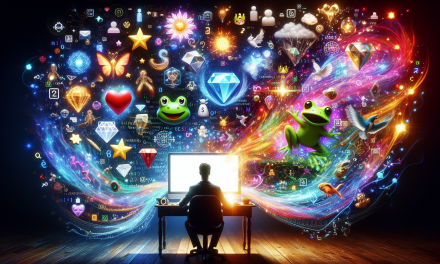Picture this: You’re standing at the edge of a cosmic dance floor, watching Earth rotate below while the Moon hangs like a silver disco ball in the distance. For over half a century, this celestial ballroom has been exclusively a men’s club—every single human who has walked on the Moon has been male. But NASA’s Artemis program is about to change the music entirely.
Think of Artemis as humanity’s most ambitious playlist remix. Just as a DJ takes classic tracks and gives them fresh energy with new vocals and beats, NASA is taking the legendary Apollo program and updating it with twenty-first-century technology, twenty-first-century values, and twenty-first-century dreams. The goal? Land the first woman and the next man on the Moon by the mid-2020s.
Why Artemis? The Power of Intentional Firsts
You might be wondering why NASA specifically emphasizes landing the “first woman” rather than simply the “next humans” on the Moon. Here’s where coding thinking comes in handy—programmers understand that being intentional about representation in your code makes your programs more robust, creative, and successful.
When the original Apollo missions launched, they reflected the demographics of their time: a predominantly male, predominantly white space program. That wasn’t necessarily by design—it was the default setting of that era. But defaults can be problematic. Just like how early computer programs crashed when users entered unexpected data, space exploration has missed out on tremendous talent and perspectives by operating with narrow defaults.
Artemis represents a conscious “refactoring” of space exploration—taking the core mission (get to the Moon) and rewriting the code to be more inclusive, more collaborative, and ultimately more powerful. It’s named after Apollo’s twin sister in Greek mythology, a deliberate choice that signals this isn’t just Apollo 2.0, but something fundamentally different.
The Technical Symphony: How Artemis Actually Works
If you’ve ever tried to coordinate a group video call with friends across different time zones, you’ll appreciate the complexity of getting humans back to the Moon. The Artemis program is like orchestrating the world’s most elaborate video conference—except instead of unmuting yourself, you’re launching rockets, and instead of screen sharing, you’re operating lunar rovers.
The mission architecture involves several key players working in perfect synchronization. The Space Launch System (SLS) rocket—think of it as the opening act that gets everyone’s attention with sheer power. The Orion spacecraft serves as the tour bus, carrying astronauts on the quarter-million-mile journey. And the lunar Gateway, a space station orbiting the Moon, acts like a cosmic rest stop where crews can prepare for the final descent to the lunar surface.
But here’s where it gets really interesting from a systems thinking perspective: unlike Apollo, which was essentially a solo performance by the United States, Artemis is designed as a collaborative jam session. International partners like Canada, Japan, and European nations are contributing everything from robotic arms to life support systems. It’s like coding an open-source project where contributors from around the world add their expertise to create something no single programmer could build alone.
The Diversity Dividend: Why Different Perspectives Matter
Here’s something fascinating that applies to both coding teams and space crews: diverse groups consistently outperform homogeneous ones when tackling complex problems. NASA has learned this lesson the hard way over decades of missions.
Consider the concept of “group think” in programming—when a team of similar people all approach a problem the same way, they often miss elegant solutions that someone with a different background would spot immediately. The same principle applies to space exploration, where quick thinking and creative problem-solving can mean the difference between mission success and disaster.
When Sally Ride became the first American woman in space in 1983, engineers famously asked if 100 tampons would be enough for her week-long mission. This wasn’t malicious—it was simply what happens when you design systems within a bubble. Diverse teams catch these blind spots before they become expensive problems.
The Artemis astronaut corps reflects this learning. It includes people of different genders, ethnicities, and scientific backgrounds because lunar missions will require expertise in geology, biology, engineering, and rapid problem-solving under pressure. Think of it as assembling the most well-rounded coding team possible for the ultimate debugging challenge.
Global Partnerships: The Open Source Revolution in Space
One of the most exciting aspects of Artemis is how it treats space exploration like a massive open-source project. Instead of competing nations working in isolation, we’re seeing unprecedented collaboration.
Japan is contributing pressurized rovers—essentially mobile lunar laboratories. Canada is providing robotic systems based on their success with the International Space Station’s Canadarm. European partners are building service modules and habitation systems. It’s like watching different programming communities contribute their strongest skills to a shared codebase.
This approach isn’t just politically smart—it’s technically superior. Just as the best software emerges from collaborative development, the most ambitious space missions benefit from pooled expertise, shared costs, and redundant systems that increase safety and reliability.
Beyond the Moon: The Next Giant Leap
Here’s where Artemis gets really ambitious: the Moon isn’t the final destination—it’s the testing ground. Think of lunar missions as beta testing for Mars exploration. The technologies, international partnerships, and operational procedures developed for Artemis will become the foundation for humanity’s next great adventure.
The lunar south pole, where Artemis missions will land, contains water ice that can be converted into rocket fuel. This transforms the Moon from a destination into a cosmic gas station, making Mars missions significantly more feasible. It’s like discovering that your practice coding environment actually contains reusable libraries that make your production projects much easier.
Scientists also hope to use lunar telescopes to peer deeper into space than ever before. The Moon’s far side, shielded from Earth’s radio interference, could become humanity’s premier observatory for detecting signals from distant galaxies—or even extraterrestrial intelligence.
What This Means for Tomorrow’s Problem Solvers
The Artemis program represents more than space exploration—it’s a masterclass in twenty-first-century problem-solving. It demonstrates how to take a classic challenge (getting to the Moon), apply modern values (inclusion and collaboration), and use contemporary tools (international partnerships and advanced technology) to achieve something greater than the original.
For anyone learning to think like a coder, Artemis offers profound lessons: the importance of diverse teams, the power of international collaboration, and the value of building systems that can be extended and improved over time. Most importantly, it shows how being intentional about representation doesn’t just make our projects more fair—it makes them more successful.
When that first woman steps onto the lunar surface, she’ll be representing more than her own achievement. She’ll be proof that when we consciously expand our definition of who gets to solve humanity’s biggest challenges, we don’t just change who participates—we change what becomes possible.








